– Welcome, everyone to Wednesday Nite @ the Lab. I’m Tom Zinnen; I work at the University of Wisconsin-Madison Biotechnology Center. I also work for the Division of Extension, Wisconsin 4-H. And on behalf of those folks and our other co-organizers, PBS Wisconsin, the Wisconsin Alumni Association, and the UW-Madison Science Alliance, thanks again for coming to Wednesday Nite @ the Lab. We do this every Wednesday night, 50 times a year. Tonight, it’s my pleasure to introduce you Rebecca Larson. She’s a professor in the Department of Biological Systems Engineering, and she’s an Extension specialist. She was born in Southfield, Michigan, and went to high school in Lakeland High School in White Lake, Michigan. And then she went to Michigan State University and got all three of her degrees there in Biological Systems Engineering. She came to UW-Madison in 2010.
Tonight, she’s gonna speak with us about Managing Manure to Reduce Environmental Impacts. Would you please join me in welcoming Rebecca Larson to Wednesday Nite @ the Lab?
– Thank you, Tom, welcome, thanks for joining me today. I’m gonna talk a little bit about manure. I’ve worked with manure for a very long time, my whole career, actually. And today, I wanna talk to you a little bit about the risks of manure, how manure systems work, and then how we can reduce some of the environmental and human health risks that come along with that, so we can manage livestock systems to be more sustainable. Manure’s been around for a very long time. I like to start with this picture of a really old manure hauling system that actually was hauled by horses long ago. Long time ago, they hauled manure out to fields as well. They knew it had nutrients, they put it out there, and it was the start of really sustainability on how farms can operate. Sustainable farms and livestock systems, we like to take the animals and feed them, they produce manure.
We take that manure, we might process it, we might store it. But then we wanna put it back out on the crops, and then grow that feed for then the animals to be able to eat that and complete the cycle. Really, the goal here is try to limit any of the manure from being lost from that system. If you could contain it all, like say, a biodome or something, that would be the best way, but we can’t, right? We grow most of our crops in field out in the world and there’s a lot of environmental conditions we can’t control. And so, we try to do our best to make sure that those nutrients go around in this nice, sustainable cycle, but we can’t always do that. And so the environment can handle some losses from the system, but we don’t want those losses to be so big that it really impacts the environment around it. So I’m gonna talk a little bit about manure systems, so that as I go through today and talk a little bit about how to manage systems, you might be a little more familiar with some of the terms and the components. Manure is produced from livestock animals, we collect it, and then we land-apply it. Those are really the basic steps, right? Manure is produced from all livestock animals. Today, I’m gonna talk a lot about dairy systems, but a lot of the components here are similar to a lot of different livestock systems.
Even if you’re in an organic or a grazing system where the animals are out in the field all the time or most of the time, the manure is produced and just is immediately land-applied. In other systems where animals are in barns or other housing, we might have to collect the manure from those systems, and then we’ll land-apply it later. Now, all systems pretty much have those components. I would say 99% of livestock systems follow that kind of general, produce manure, collect it, land-apply it. A lot of those systems though, have parts where we can process the manure using a variety of different technologies, or we can store manure. So the processing systems are, there are many, many, many processing systems that can do all kinds of different things to manure. The goal is we’re trying to change the manure characteristics, eliminate pathogens, change the nutrients so that we can more effectively use the manure down the line. We can also store manure. That’s really helpful in terms of when we land-apply it, right? So if I don’t have manure storage, I have to collect my manure and land-apply it every day. We call that daily haul systems.
Now, as I build manure storages, I can provide enough storage. So, say I have winter, like in Wisconsin, then I don’t have to apply the manure at times that don’t make a whole lot of sense, like when it’s snowing and the manure nutrients can’t go into the ground. Or when the ground is frozen and when it melts, we don’t want the manure that’s on top of it to run off. Or I wouldn’t wanna apply manure right before a rainstorm, where a lot of those nutrients and manure components would be lost. So we wanna use these tools that we have in manure processing systems to try to reduce our risks when we’re using manure throughout the system. So I just wanna show a few pictures so you can understand what these kind of systems look like. So, manure collection systems really are just the way that we get manure from where it’s produced to a place that we might store it, or where we might collect it to land-apply it. So, most places and dairy systems will collect from the alleyways. We can use scrape systems, you can see that skid steer there, that’s a very common way. I’ll go down the alleys, I’ll collect the manure that way.
I can also use all kinds of channels, which I can then flush with other liquid manure. I can use augers; we even have robots now that can go and you can program, kind of like your Roomba at home, you might have one of those, we also have those for livestock farms. So there’s a lot of different systems in the way I might collect manure. And they’re all different. All kinds of livestock farms are operated a little bit differently. So we need different kind of systems, particularly for manure, when we have different constituents, right? So, I might have manure that’s really thick or really thin, and that might change the way I need to collect it and move it around. As an engineer, that’s really important, because I need to provide ways to get the manure to where I want it to go. Then we can do manure processing. There are lots of different manure-processing strategies. I would say one that people are pretty familiar with is composting.
You can see the picture here, of that’s windrow composting, where some of the compost piles are curing there. And we have lots of different processing systems, digesters, maybe you’ve seen where we produce biogas. You can can dry manure, you can produce biochar through pyrolysis. You can use membranes, you can do all kinds of things. We even have farms now that are treating manure all the way to clean water. You might not believe it, but I was at one of the farms, and I was able to drink some of that water made from manure. You might not want to do that, but it’s safe, right? It goes through all the same kind of processes that you might use at a treatment plant to clean water that you can drink or discharge. So there’s a lot of different processing and treatment technologies out there. And they all have some kind of cost and labor and additional things that producers have to integrate. So they can add complications to systems, but they can also have a lot of benefits operationally, financially, and environmentally.
Manure storages, as I mentioned before, are systems where you can store manure and then you can land-apply it at a different time. I like this image, ’cause it kind of shows a layout of a dairy farm here, and where you wanna have the storage close to the farm, right? So we produce the manure, we wanna move it and hold it nearby, so we don’t have to transport it really far until we’re ready to go to the field. Now, you wanna be careful at where you store manure because you don’t want the animals too close to it. It can have a risk for those animals if there’s pathogens you don’t want to be shared amongst all the animals. Kind of like if you thought about storing your own human manure. If you had to store manure near you, you’d want it not too far that it’s hard to manage, but not so close that it makes it difficult for your health, and makes it unpleasant in terms of maybe odors or other things that you might not like. So the same is kind of here. We have manure storage near the farm. It allows us a lot of flexibility in the management of how we use manure. And we have lots of different kinds of manure storage systems.
Some of them are made of concrete, some them have plastic liners, some are made of clay. They’re all different types, and the whole point is to be able to provide flexibility in the timing of when we land-apply manure. There are also some kinds of manure storages that might be called manure lagoons or other systems such as that, which are also providing some design treatment as the manure is held within them. Generally in Wisconsin, we design them more for storage, but you can see all kinds of systems out there. Now, after we store manure and we need to go out into the field, generally, we’ll agitate manure to try to make it consistent. You can see in this picture, a lot of when we store manure, it stratifies, right? So one of the things that happens is some of the things float to the top, some of the lighter density, and some of the other things settle to the bottom. And so we wanna remix those things in so that the manure is really consistent, so that we have consistency in the nutrients when we apply it out into the field, so we can have fairly decent yields throughout the field. You can imagine if I didn’t mix it correctly and I put it out in a field, and a lot of nutrients ended up in one spot, we would have too many and too little in another area, our crops wouldn’t grow as we would want them. So we try to mix the manure up; we call that agitation. There’s lots of ways we do that, manure boats, we can connect them to tractors and we agitate and move the manure around.
And then we’ll move it out to the field. So, here you can see a tanker that’s being loaded while we’re agitating. We load manure into the tanker and then we take it, drive it out to the field. Maybe as you’ve been driving out on roads before, you’ve passed a tanker, or seen a tanker hauling manure or smelled a tanker [chuckles] while it was headed out to the field. Traditionally, if you have manure storage, you’re applying manure sometime in the spring or sometime in the fall. We do have new, advanced techniques that allow you apply at different times. There also are ways that you can pump manure to the field. So, if you wanna reduce your road traffic, these systems are very heavy, they can damage roadways, you can use pumping systems. So some of them are not permanent; we call those draglines. And you can lay those out and pump manure to different areas.
And then we have permanent lines that run underground, typically six or eight inches in diameter, and you run manure through those systems, directly out to the field. And then you can apply manure in lots of different ways. Sometimes we take tankers right out into the field and we surface broadcast. That means you apply manure on the surface. We can inject manure underneath the surface, so that maybe you could reduce odors or reduce runoff. There’s lots of different ways that we can apply manure. We can use irrigation systems. But it’s very specific to maybe the kinds of soil you have, the equipment that you’ve purchased, the kinds of manure you have. If I had really thick manure, I probably wouldn’t be able to put that through a irrigation line, right? So there’s a lot of different systems, but you have to pair them all together with the specific needs that you have at your farm. So looking at all that, there’s a lot of pieces, and I’m only talking about the manure component of a farm, right? At a livestock farm, they’re producing milk, they’re producing meat, they’re producing other things.
So why are we so concerned with the manure systems and what’s happening? Well, there’s a lot to manage. You can think about the fact that we have groundwater resources that could be a impacted, we have surface water resources that could be impacted from manure, and we have air quality that could be impacted. Now, when we apply manure, you can think, it could reach the groundwater through leaching. So, we could have runoff in which some of the manure components could reach surface water via runoff. And then we can have volatilization, or even blowing of some of the particles so that we get this dispersion into the air. And so, then we have air quality. We could have air-quality issues where we end up with particulate matter or emissions in the air that are dangerous, either for our own personal health or for that of the animals. When we talk about water quality, not only do we wanna be careful of surface water because it impacts swimming, it impacts animals and aquatic life, we also wanna be careful because when we get contaminants in our groundwater, they’re really hard to remove. And remember, our drinking water generally comes from groundwater. And so, those of us who are not on city systems that are tested regularly, we could have concerns if that groundwater is contaminated where we’re drawing from our well, right? So when we’re talking about manure, we wanna be really careful in that the systems we’re using aren’t impacting all of these environmental systems around us in a way that would be risky to us.
So there’s a lot of things that could potentially be in manure that have environmental risk. We have nitrates, we have phosphorous, we have organic matter, pathogens, there’s methane, which is a greenhouse gas that contributes to climate change. And so, we have to really think about all of these different things and how we’re gonna manage systems. It becomes very difficult. So, here I have 10 listed, not even in any particular order of importance, but these are only, maybe the top 10 that come to my mind over time, right? There’s a lot of other ones, say PFAS or other emerging contaminants that still might be of concern, right? But these aren’t kind of the big ones that are there. And so, I like to focus and think about these in terms of water quality and air quality. In terms of water quality, we really wanna think about runoff and then groundwater, as I mentioned before. Some of the difficult things to think about is that while we manage these systems really effectively, there are some real challenges in terms of the number of farms that are out there, how we manage the systems, and then how we look at compliance, right? All farms have to follow standards. So there’s standards that have been developed to protect water and air quality that farms need to follow, and so they try to manage their systems to fall in line with those. Now, there’s a lot going on at a farm.
And I will say some people manage their farm systems really, really well, and some, maybe not as much, right? And so, there’s different risks that are associated, but a lot of those risks are based on how those farms are managed. So some of the concerns, I would say, are nitrate and private wells. So some of the major concerns, I’m gonna go through really quick in terms of groundwater first. Nitrate, which can leach through the soil profile, can result when you apply manure, which doesn’t have nitrate in it directly; it has nitrogen. And nitrogen, we need nitrogen, right? We have nitrogen in almost everything, our plants that grow, they all need nitrogen, right? So we want that nitrogen to get from the manure into the plant. But what happens is sometimes that nitrogen can change form. And nitrate, while useful to plants, we don’t necessarily want that in our groundwater, right? So when we get it in our groundwater, and then say, if our children might drink it, it can cause something called blue baby syndrome. So if you have very small children and the concentration is very high of nitrates, then possibly, the babies won’t get enough oxygen, right? And so their lips might turn blue, that’s something you might notice. So that’s how you know some of these things are concerning, right? And when we look around Wisconsin, we know from some reports and testing that we have a lot of issues with nitrates. Now, nitrates aren’t just from manure.
They can come from other fertilizer and sources, but we know manure contributes to the nitrogen leaching. So crops sometimes uptake them, and then sometimes, we lose some of it as it moves through the soil profile. How does it do that? Well, it rains and so that nitrate can move as the water infiltrates and moves downward. So we wanna try to use all that nitrogen in the crops before it moves downward, but we can’t always do that. And so sometimes we need to try to manage it effectively to put the right amount of nitrogen at the right time. Those are really big things in manure management. The right timing, in the right place. And so that we can try to reduce the losses down to groundwater. There are also other concerns. You never wanna turn on your faucets and then all of a sudden, you see something coming up from your groundwater that might look too much like manure, right? And that is something that’s happened in Wisconsin.
And so sometimes the soil structure, which we call karst, might allow for even greater infiltration of some of those components to move through the soil profile and end up in our groundwater, and that’s really concerning. One of the biggest concerns about that is manure pathogens, right? So there’s a lot of pathogens that can be in manure. They’re not always present, but they can be present and they can be in high concentrations. So just like humans, animals can get sick. And when they’re sick and they have those pathogens within them, those come out in their manure, right? So then the pathogens are present in the manure. Now, if I take that manure and I spread it onto fields, it can then result in runoff that leads those pathogens to reaching surface water and to reaching groundwater. So we wanna try to protect people from that by trying to manage those pathogens. The first thing a lot of people do is they try to reduce the animals that are sick. So if you can reduce the sick animals, you won’t see that as often. But so, then there are lots of pathogens that can be within manure that can be harmful to people and to other animals.
So when a pathogen can be transferred from an animal to a human, we call that a zoonotic pathogen. There’s some common ones that I’ve listed in this slide, some bacteria that you may have heard of, I’m sure a lot of people have heard of Salmonella, or E. coli O157:H7, or maybe cryptosporidium, which is a protozoa, or Giardia, right? So those are some common ones you hear about a lot that maybe cause some gastrointestinal illness, but then there’s lots of others, viruses, other things that maybe are less common. And so some of these are very common and we see them regularly, and then we see them differently in different kinds of livestock. But then the other thing to take into account is the amount that is lost affects you. So we want to try to reduce these pathogens and how many of them end up in places that can then result in making us sick. We do know that they get into our groundwater, right? There’s a lot of places pathogens can reach our groundwater. They can reach it from manure being applied, they can reach our groundwater from maybe septic systems that aren’t operating very well. Those are two really big sources that we know contribute. And manure definitely contributes to that.
And a lot of times, and in a significant rate, right? So we apply manure, particularly if there’s not enough depth of soil to provide enough treatment, those pathogens can move down through the profile into our groundwater. So those are some of the major groundwater concerns in my opinion. There are others, but those are the ones that are most present for manure. And we also, I think about surface water. So I think a lot of times when people think about surface water and manure, something comes to mind with algae growth, right? So we have a lot of algae growth that can be related to manure runoff events, right? So we put manure, we end up with some of the phosphorus that is from there moving from the land into the waterways. And that happens ’cause we lose a little bit of soil, of manure every time it rains. So I like people to think about it as, if you apply a certain amount of phosphorus to a land base, and then some of that is always going to be lost, right? You’re always gonna lose a little a bit, right, as a rain event comes. But then we try to use systems to keep that in. We try to use buffer strips, edge-of-field barriers, other things to try to limit the losses of those nutrients leaving the field. Because we want them in the field.
We want them to go into the crops. We don’t want them to run off into the thing. But one of the problems historically has been that we’ve put so many nutrients on the field that phosphorus can build up, right? And so, even when we lose a little bit of the soil or what’s on the surface, since there’s so much of that nutrient in there, it has a really big impact. We’ve applied it for too long, it’s maybe built up in some fields or built up in waterways. And so, we see this constant release of it, even in maybe small events that normally wouldn’t trigger such an impact. But what we know is that when we apply manure to fields, we’re adding nutrients and other pathogens, organic matter. And all of those can be lost in runoff, right? And we try to use techniques to reduce that by managing and what we can maybe call nutrient budgeting, where we use planning to put the right amount of nutrients for whatever crop we’re growing. And then we try to use a lot of, I would say, edge-of-field barriers to reduce those things from moving into waterways. And then we also try to use practices in the field to reduce them from running off. But we do know that manure that runs off the field does have an impact to surface water.
We know the amount of manure that we apply has an impact. And we have a tendency out there to argue a lot about what fraction. There are other sources that lead to surface water issues that are not based on manure. But manure contributes to those surface water issues, particularly in Wisconsin. We know that they contribute to that. It can be debatable how much, but there is a significant impact from manure applications. Now we do try to manage that, and there is lots of the ways we try to reduce that. But we know that there’s phosphorus losses from cropland all around the U. S. And we’ve known for a long time, the relationships which drive that kind of runoff.
Now, I’m talking a lot about phosphorus because it’s important, it’s what we call a limiting nutrient, a lot of times, for our freshwater systems that are around us. What that means is that the algae needs all of these different nutrients to grow, or nutrification processes in general. And that’s meaning kind of the degradation of our surface water. And so, the more we add of this phosphorus, it’s the limiting nutrient that’s allowing the algae not to grow. So other nutrients, organic matter, they have other issues, but phosphorus tends to be the limiting issue in a lot of places. It doesn’t have to be in all of Wisconsin freshwater, sometimes it can be nitrogen or other micronutrients, but phosphorus is a limiting nutrient in a lot of our freshwater systems. So again, we know when we apply this phosphorus to the soil, we’re gonna lose a little bit of it. But we know if we apply too much of it, we’re gonna lose more of it. So we are gonna try to use practices that reduce the application to the field. So we wanna put the right amount so that we end up with the correct amount of phosphorus that the crops need, and not excess, because that leads to more losses.
And then again, we’re gonna use those edge-of-field and practices in the field to try to reduce that. Now, we also have concerns with air quality. We can have particulate matter, greenhouse gas emissions that contribute to global climate change. And we can have hazardous air pollution. Today, I’m gonna mainly focus on greenhouse gas emissions, and I’m also gonna talk a little bit about ammonia. I do wanna say, in case you’re concerned about hazardous air pollutants. In manure systems, we can have ammonia emissions and hydrogen sulfide emissions. I would say, in generally, field conditions are not places where you’re gonna see such elevated concentration of those that you would be concerned for human health or other health. When you do start to get near the farmstead where we’re agitating manure or other things, those concentrations can go up. Hydrogen sulfide has been a leading cause of deaths, and we have a lot of information that’s available out there that you can use to research and protect yourself from hydrogen sulfide if you’re working on a farm.
But generally, unless you’re working in agitating farms or in a confined space, from manure systems, those concentrations aren’t gonna get high enough to reach any standards of concern. The reason greenhouse gases are so important for agricultural systems is maybe, when you look at climate change and the contributing emissions, livestock systems aren’t a huge contributor, right? They don’t contribute as much of total greenhouse gases as, say, energy systems, not even anywhere near it. But there are a lot of methane losses. So for me, methane and nitrous oxide, those are two big greenhouse gases, their impact is very high, right? So they have a large impact even if a small amount is released. N2O in particular, and then methane a little less. So when we talk about greenhouse gas emissions, we might talk about 100-year horizon in their impact. And when we talk about, if we were to look at 100-year horizon, one methane molecule is equivalent to around 28 CO2 molecules, depending upon the conversion factors you might use. But so, one methane molecule has a big impact. So if we can convert that methane molecule into, say, a CO2, then we’ve really had a big reduction. So if we can target some of these methane emissions for reduction, that can have a big impact.
Now, when you look at some of the data, manure systems are definitely something that releases a lot of methane, but you’ll see that it’s not the biggest contributor. You’ll see for even farm systems, enteric fermentation is the bigger release of methane. And that enteric fermentation is from the actual cows, right? It’s from when they digest and they release methane as a byproduct. But manure individually has the ability to be able to be mitigated more effectively than some of these other areas, which is why we concentrate on it. And when you look at an individual farm, we see that the manure emissions are a pretty significant component. The only greater ones are from N2O from the field, which is nitrous oxide, and then also enteric fermentation, which is again from the animals. So when you kind of look at, we’ve done a lot of modeling, and here’s an example, just kind of to visualize where the methane emissions come from in a dairy system, right? So you can see the CH4 molecules here. And the bigger the arrow and the bigger the CH4, the more emissions that are released from that part. So again, enteric fermentation is the biggest release of methane from a dairy system. But we also get a lot from manure storage.
Now, if you don’t store manure, you don’t get all those methane emissions, ’cause you’re not holding the manure in a situation where it’s anoxic, where there’s not a lot of oxygen, and therefore, the microorganisms naturally release methane. So we know a lot of methane comes from manure storage, but then why do we store manure? Remember, we’re trying to protect water quality, right? So here’s an example of a very difficult situation in which you wanna introduce manure storage, because you wanna protect water resources and applying manure at the right time. But then we also know that it in turn increases our methane losses. So then we have to find other ways to mitigate that. So then you’ll also see that land application has small amounts of releases of methane. It’s not a really huge contributor; it’s mostly for manure systems, methane from the cow, and then from the manure storage. I just wanted you to see that kind of in another way you see and compared to some other losses, right? So in manure systems, a lot from storage, not as much from land application. And then we see that the other components are really the N2O from manure that contributes when we land-apply. So we have all these problems I’m raising, and it might seem very concerning, right? What do we do now? We have a lot of air quality emission concerns, where we’re losing methane in particular, as well as N2O. We’re also losing ammonia, which I talked a little bit about.
It’s not a greenhouse gas, but it can redeposit in areas. So it can go up into the atmosphere, it can form particulate matter, which is dangerous for us to inhale. It can have particular impacts to people, say, with asthma. It also can reposit and affect other ecosystems. So if it redeposits in a large water body, we’re getting a lot more nitrogen in that area than maybe we want. And then we had all those groundwater and surface water issues, where we’re losing some of the manure constituents to our surface and groundwater. So, what are we doing about that? Well, people have worked for a really long time to try to manage some of these. So there’s a lot of historic things that have happened. And now we’re still working to try to continue to mitigate and change these systems to be more efficient and to reduce the risk to the environment and to human health. So the first thing I wanna start out with is a little bit about the cow.
So, before it even becomes manure, a lot of people might manage cows to try to reduce the impact that that the cows might have. For example, we might want to increase the efficiency of the cows. So if I can produce more milk with one cow, they might produce a little bit more manure. But as I increase their milk production, the amount of manure produced per unit milk produced is actually less. So if one cow can produce more milk, then we can actually reduce the overall environmental impacts per each gallon of milk we produce, right? So that’s really important. The reason that’s so important is it has a huge impact in terms of efficiency, right? That’s an advantage for producers because they’re being more efficient, which can have financial advantages, as well as for the environment, because for the amount of milk we produce, we’re reducing those environmental impacts. There’s also thoughts about how we might feed cows, or how many times we might milk them. So for example, as we increase the milk per cow, we decrease maybe the amount of nitrogen and phosphorus excreted per milk produced, right? Again, so that efficiency is really important. We also find in other areas where we might determine that the size of the cow is really important, that there’s an efficiency gain if we produce a cow, maybe around 1,200 pounds instead of 1,400 pounds, that the manure and milk ratios that we get there are most efficient. So lots of dairy scientists are working on these kinds of things all the time.
And other poultry and swine, they’re always looking at these kind of efficiency things. Some of that’s really important, and I’m gonna take the example of phosphorus again, right? Because when we feed the animal, right, we give it this feed and then whatever the animal doesn’t use to produce the milk or meat that we then use is excreted in the manure and the urine, right? So one of the things that we really talk about in terms of feces is feeding the right amount to the animals. So they use really prescriptive diets to try to give the animal exactly what it needs without excreting too much. And that’s really important, because for example, a while ago, they learned that if you feed, say, a cow too much phosphorus, it excretes more phosphorus, right? So a lot of that is lost. And if you look at this particular table, you see if you feed more, you lose more in the manure, and the more you lose is what we call soluble phosphorus. So that’s more easily lost to our water resources once it’s applied to the field, right? So this is pretty simple ways that I just wanted to give you an example of how before it even gets to my area of focus for a manure, we try to change the manure constituents by adapting kind of the livestock industry and the animals upstream. We can also do that for nitrogen management, right? So we might milk more times a day, or use balanced rations. And that allows more of the nitrogen to move into the milk and then less of it to be in the manure to be fielded by. Now, we might also do things for air quality, right? So those were some things we might do for phosphorus or nitrogen in terms of changing the manure characteristics. But remember when I said enteric methane was a big producer of the methane that leads a climate change? Well, number one, cows, a lot of that methane, they actually burp that up.
I think a lot of people think it comes out the back end, but actually, most of it comes out the front end. And there’s a lot of strategies that can be used using genetics, management practices, changing feed, to try to reduce some of those methane emissions that come from the cow. And what we see here, is as you add those in, the reduction of methane per amount of milk can increase when you use some of those strategies. And then if you combine them all together, they can have a pretty big impact. And you can reduce enteric methane by maybe up to 30%. Now, in the manure system itself, remember, I mentioned there’s a lot of processing systems that can be used to change the characteristics of manure to reduce the environmental risk. I’m gonna talk about only two of those today for timing’s sake. But I’m gonna give you some examples, and then if you ever wanna learn about all the other ones, they’re on a list there, so you can think about researching biochar or membranes or other things. But digesters have been integrated in livestock systems all over the U. S.
They’re much bigger in places like Europe where they’re used much more commonly, but we have a lot of them at agricultural facilities, and we actually see them at like wastewater treatment plants as well. But these are a map of the agricultural digesters in the U. S. You’ll see the majority of the systems in Wisconsin are a little bit smaller than some of the large ones that might be at larger farms in other areas of the country, but they’re mostly on dairy systems. But you can see that they can be installed on any kind of livestock system. And what happens in a digester, is the digester produces methane that is then collected and used to produce energy. And when we take that methane, remember, before I said it had a CO2 equivalent of maybe 28. So that’s 28 CO2s compared to one methane. And so then when we burn it or we use it and combust it, we can convert that CH4 to a CO2, and therefore, we’ve reduced the impact to global climate change by 28 times, right? So we see some of these installed in Wisconsin. And you might have seen them on the landscape before.
Some of them are big tanks, where the manure enters into the system and is collected in the head space in a dome above it. Or some are plugged underground systems that are made of concrete collected in the head space within the concrete underground. So they operate in a very similar way. Manure goes into the system, the naturally-occurring microorganisms within manure produce the biogas, which we collect, and then we use that to produce energy. Now, they can be at small farms, at large farms. It really doesn’t matter the size of the farm, although smaller farms have more difficulty making them work financially. We also see dry digestion systems. So the systems that I showed before were liquid systems, where the manure flows in, it’s pumped, it produces gas. And then these systems are dry digestion systems, where the manure has a higher solids content, and they kind of look like a garage, right? Where we put the manure in, close it up, and capture the gas. There’s even really small systems that we use in many different countries.
They’re not as common here in the U. S. , but you can make them out of almost anything. Really, we’re putting the manure in a digester into a closed vessel and not allowing oxygen to get in there, so the microorganisms can produce methane. Now, then we can then direct burn that for heat, we can do electricity generation, you can compress it to produce bioCNG, or rCNG, sometimes called renewable CNG. And you can use that to run tractors, cars, all kinds of things. You can also use it to produce chilling in an absorption chiller. So when we use a digester, we put the manure in, we produce this great biogas, and we can use it for energy. But then the manure still comes out the other side. We’ve collected gas from that system, but we still have to deal with the end product of the manure on the other end.
Now, there’s a lot of benefits to that manure, even though we still have to manage it on the other side of the digester. It has really large pathogen reduction, upward of 80%. So that’s not perfect. If I had a high concentration of pathogens in the beginning, reducing to 80% would still leave a lot of pathogens. But I would still rather have manure applied that had an 80% or 90% reduction of pathogens than manure that did not, right? So it has a risk reduction there. It also reduces odor. So it destroys some of the compounds, particularly volatile fatty acid or other odorous compounds. There’s a lot of compounds in manure that cause odor. And we know that digesters can destroy a lot of those. And so you have a lot less odor from the manure.
So that’s not necessarily a risk to your health, but I know psychologically, it can be very disturbing to be around something that smells very bad for a long time. It also can do things like degrade antibiotics. Now, composting might be better for that, but we do see some degradation in a digestion system in terms of antibiotics. The really big thing about digesters though, the pathogen control is really great, but it really can take those CH4 molecules, turn them into a CO2. And so we really see a reduction in the global warming potential. So digesters have this great ability to reduce the impact to global climate change by converting that methane into CO2. It’s not all great though, right? So while a digester has all those great impacts, it also mineralizes nitrogen. So that means we’re taking organic nitrogen and converting it to inorganic. Now, that’s a good thing because that’s the form plants use, but it’s also unfortunate because it’s a form that can be lost more easily. So if we’re not careful and we don’t employ additional strategies, if we just digest manure, we might lose a lot of the nitrogen as ammonia emissions, which again, we don’t want.
We don’t want that redepositing somewhere else. But you can use those techniques and other techniques to reduce ammonia emissions after. Maybe I inject manure, maybe I cover my storage. There are techniques to do that. I just want you to be aware of that. A lot of these systems might have some benefits and some drawbacks. So as we’re looking at the different kind of systems, we really have to pair them with the target needs of the farm and really think about the system as a whole. The nitrogen availability can be really beneficial. I would say when we were in Uganda, they don’t have a lot of access to fertilizer. So the increase in availability and applying that really could change the production capacity.
Or even in the U. S. , maybe reduce the amount of supplemental nitrogen that needs to be applied. Now, why don’t we see these on every farm? Well, the economics for all these kinds of processing systems can be difficult. I would say, up until very recently, most digesters were producing electricity. And a lot of them were breaking even at a price point that you could probably no longer get a contract for. And so it’s really difficult to find solutions that are economically viable that also lead to improved environmental sustainability. Now, recently the economics have changed a little bit and that people can move to that compressed natural gas, bioCNG, as we called it. And they can really get some credits that are now available in terms of policy changes that allow those systems to be more economically viable. But it’s an important point to make.
I think if you want to be more environmentally sustainable, sometimes we have to find ways to pay for that. And we need to think about how that’s gonna affect our food supply chain and where it is in our policies and other practices that we can make sure that we’re accounting for that need to pay for the desired changes we might see. Another processing strategy might be solid-liquid separation. And so in that, we might take manure and separate it into two parts. Now, the advantage there is that now I have two piles of manure. I might not want that. Now I have to manage two piles instead of one pile, but the two piles now have very different characteristics. And so then I can use them more effectively. So I might have one pile that has higher solids that then I can move to farther away fields, or one that might be more liquid that is better to pump somewhere, right? So as I start to change the characteristics, I can change the way I use manure. There’s lots of technologies out there that allow us to change manure.
So we have centrifuges. We have rotating drums, where the manure goes in and there’s a component that rotates and manure moves through a screen. So the liquids move through a screen and the solids stay in and get pushed out the end. We have incline screens that can separate really small particles. We have roller belts that can press the liquids out of manure solids. I think sometimes people are really surprised when they see all this equipment. And that some farms are integrating many different ones of these in a row to try to change the characteristics of the manure, so that they can more effectively use them in the end. One of the really important things to think about is all of these systems have efficiencies, right? So the digester has an efficiency. It can produce more gas if you run it in a way that maybe it has more heat, or maybe you’re paying more attention to the feed stocks or the duration, but all of that takes energy and effort and labor, right? So not only are you managing your livestock farm, but now you’re managing all of these other systems that are very complicated. And all of a sudden, your farm management is really getting pretty intense, right? And so the way that we manage these systems is really important.
And that the separation efficiency for some of these systems and the way we divide the nutrients up, the way we divide the solids up is really important in terms of the environmental impact they might have. Now, when we look at processing, we can then model some of these pieces that we use as we are looking at trying to reduce some kind of environmental impact. So for greenhouse gas emissions, we might look at, what is the impact of a digester, say, compared to a solid-liquid separation system? Now, you might say, how does a solid-liquid separation system reduce greenhouse gas emissions? Well, when we separate these two things, it really affects the moisture content. And so therefore, the oxygen availability changes, it changes which microorganisms are more active. And so now, with this system, we can see that the microorganisms produce less methane when the manure is separated into different piles generally. And so we might look at, how does this work? So we might see that when we add a digester, emissions are reduced pretty significantly as we go from that CH4 to that CO2 molecule. Now, when we move to solid-liquid separation, we’re also changing the microorganisms, and that the byproduct isn’t methane anymore. And typically, you’ll see more aerobic microorganisms producing CO2. And so what we see when we model those things, is actually, solid-liquid separation systems have just as great as a potential, maybe as digesters, to reduce some of those greenhouse gases. Now, why does that matter? I have other benefits of a digester in terms of it kills pathogens and other things, but I think the important thing is that solid-liquid separation systems are a little more accessible to everybody and they’re a little bit cheaper.
So what we are trying to do within our research group is look at all these different interventions and try to figure out which ones in which circumstances can produce the most impact in terms of maybe greenhouse gas emissions. In this case, right? Or maybe we wanna look at it for how much they reduce losses of phosphorus. So there’s a lot of things we have to weigh, and we can look at all of the different situations in which we can implement these different kinds of processing technologies. And then we get through after processing and now we’ve balanced what’s happening with the cow, right? We’ve thought about how we could manage the animals, we’ve thought about how we could process the manure. There’s a lot of different technologies that you could look through and maybe integrate on a system. And we need to look at the processing capabilities in terms of their environmental impacts, in terms of their economic impacts. And then I can go to my land application step, right? ‘Cause we know still, that’s the last part of the manure system, and generally, where all the manure ends up going. Now, in our land application systems, there’s a lot of new techniques that can be implemented. So I think a really traditional old way is what we call surface broadcast, where the manure is just spread on the land. Now, that’s a great way to get manure out there, but you can imagine if it rained the next time, some of that could run off and a lot of it can be lost to emissions.
So one thing we do, is we might inject manure, right? And you can see here, what happens in an injection system, is we actually open up the soil, we put the manure in, and then we close the soil on top of it. Now that’s pretty great in a lot of situations, right? Now, we’ve covered up the manure, so we don’t lose as much ammonia to volatilization. And now, if it rained, we wouldn’t get as much runoff of some of those components. And now it’s in the soil subsurface, where it could get to the crops. Now, why isn’t everybody doing this? Well, there could be an instance where you have really shallow soil, where actually getting those manure closer to groundwater where you don’t want it, right? In those karst situations, maybe that’s not what you’re looking for. And there could be an instance where the field soil is too wet, or it’s too thick, and it just is really operationally a challenge to get that system out there. So I hope you’re noticing a trend here. And that there are a lot of interventions, but you really have to think about what kind of farm system you have and which systems might be most effective, right? And you might wanna use an injection system in a place where you’re really close to a surface water stream, right? You have a stream nearby, I wanna inject this so this manure isn’t reaching over there. You might not wanna use it if there’s no surface water nearby, and your field is just surrounded by other fields, and you have karst. Maybe a surface application in that case would be better, so that you’re not getting it closer to groundwater.
When we apply using these different techniques though, there’s a lot ways that that can impact, right? And one of the biggest things to think about is timing. So we wanna apply manure at a time when the crops need the nutrients, but we have difficulty doing that when the crops are up high enough that we might damage the crop with the manure-application equipment. So we even now move to maybe irrigating, which might have the benefit of that you could apply more dilute manure later in the season when the crops need it without actually damaging the crops. ‘Cause remember, before I said that we generally apply in the spring and the fall, and that’s because the crops aren’t growing at that time, right? So we can get the equipment out there. And so that irrigation equipment just allows us more flexibility, just like manure storage systems, right? More flexibility in the timing. The last thing I kinda wanna talk about is some common misconceptions that I think about. Farm size in the impact to the environmental footprint of our farm. Now, large farms have more manure, right? So right there, there’s more risk. You can have more environmental risk with larger farms compared to smaller farms. But large farms also have more resources that they can better manage.
A lot of these processing systems go in, not larger farms compared to some of the smaller farms. So there’s a lot think about there, right? So it’s really not about the farm size, it’s about how the farm manages. So there are great small farms that manage things really well, there’s also really large farms that manage things well. There’s also small farms that don’t manage well, and large farms that don’t manage well that have a bigger impact to the environment. Not necessarily is that always due to just the size of the farm, right? It’s the management that we need to think more closely about instead of just the size of the farm itself. There’s lots of data out there that shows certain practices are more associated with a certain farm size. And so then we can use that data to kind of look at reference scenarios and understand what management practices are really driving these bigger or smaller impacts from these farms, so that we can guide different farm sizes and different practices on how they might better implement technologies or management practices to improve their overall emissions. There’s a lot of mitigation strategies out there, a lot of impact that we can get to. I really hope that today, you learned quite a few things here. That number one, there are a lot of options on how we can reduce the impact of manure.
We know manure has impact to water quality, we know manure has impact to air quality. And as we process these things, we’re able to reduce those impacts and manage the impacts to try to be lower. And we wanna try to use a lot of these tools to reduce that, right? So we use manure processing strategies, we use those land application strategies, and we try to reduce the environmental impacts. Now, a lot of those can be conflicting, and are very specific to a certain farm type, right? So as we think about farm types and the sizes and the practices that they use, that is much more important than some of the other things that maybe people think about, right? So we really need to match the practices to the farms that are using them. And I would say there’s a lot of assumptions out there that people make incorrectly. And so we wanna try to use data and more scientific data to allow us to choose things that can really reduce the impacts we have to the environment when we’re using these livestock systems. I’ve gone over a lot today; I hope you’ve learned something. I do wanna say that there’s lots of resources out there if you’d like to learn more. We have lots of really great fact sheets, a huge series at the learning store. We also have a lot of online resources.
We’ve worked with Penn State to build a nice virtual farm, where you can actually go and investigate a farm, and look at some of these particular processing systems or implementation and mitigation strategies, and see how they impact a farm, and how they’ve been implemented, and what can be done in your area. We also have courses that you can take that can give you even more information. I hope really, that you’ve learned a lot today, and that you have found some of the information valuable. I know working with manure over a long time, that it has some big concerns, but it also has the potential to do really wonderful things so long as we can try to reduce the risks that can come from the way that we manage our systems. Thank you.
Search University Place Episodes
Related Stories from PBS Wisconsin's Blog

Donate to sign up. Activate and sign in to Passport. It's that easy to help PBS Wisconsin serve your community through media that educates, inspires, and entertains.
Make your membership gift today
Only for new users: Activate Passport using your code or email address
Already a member?
Look up my account
Need some help? Go to FAQ or visit PBS Passport Help
Need help accessing PBS Wisconsin anywhere?

Online Access | Platform & Device Access | Cable or Satellite Access | Over-The-Air Access
Visit Access Guide
Need help accessing PBS Wisconsin anywhere?

Visit Our
Live TV Access Guide
Online AccessPlatform & Device Access
Cable or Satellite Access
Over-The-Air Access
Visit Access Guide
 Passport
Passport





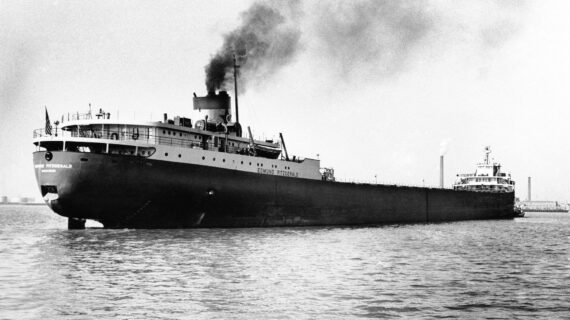


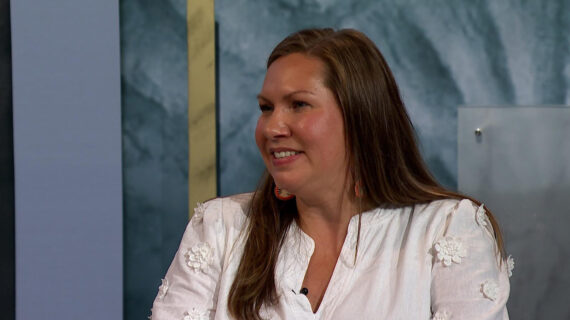

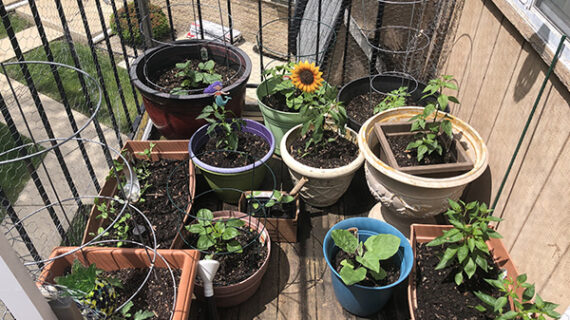

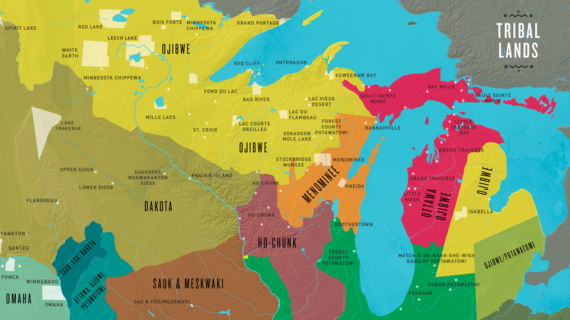
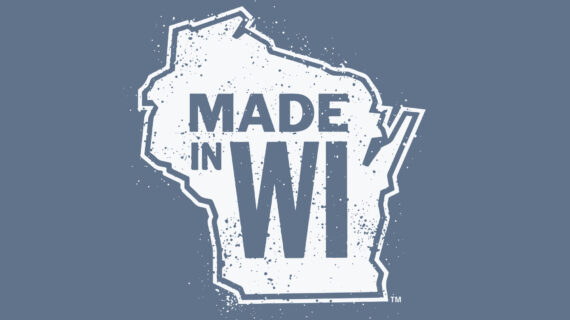
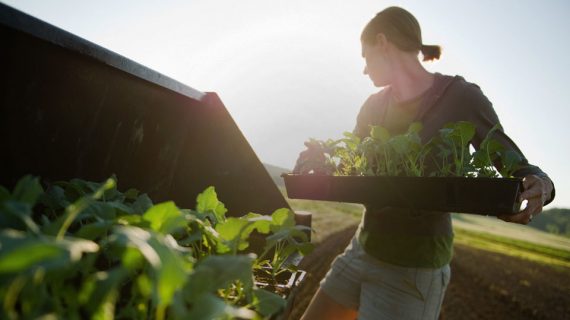



Follow Us